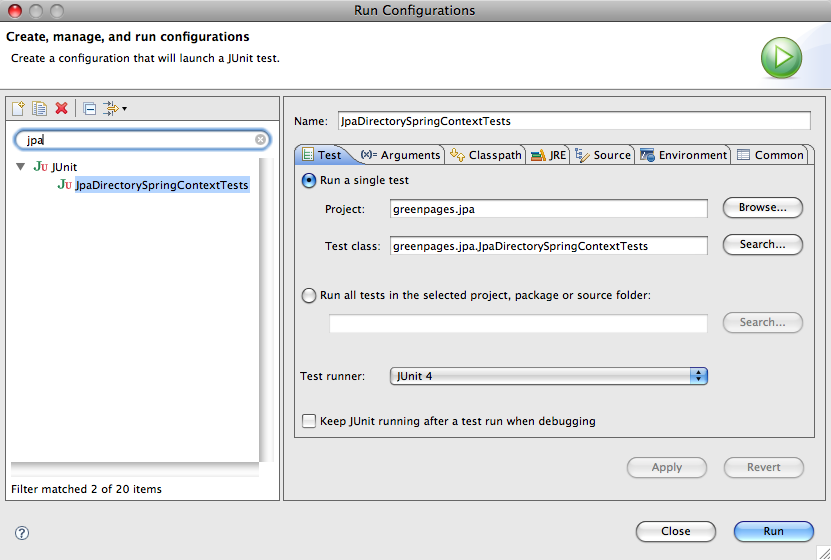One of the most common forms of integration testing is ensuring that the object relational mapping in an
application is working properly. This kind of testing typically uses a data access object to retrieve data
from a live database. In this step a test case for the JpaDirectory
class is created.
Open the greenpages.jpa.JpaDirectorySpringContextTests class in the
src/test/java source folder of the greenpages.jpa project. This
class contains a method that uses JUnit to test that a search completes
correctly. Rather than instantiate
this class directly in the test, the Spring Test Framework is used to instantiate and inject a
JpaDirectory based on the META-INF/spring/module-context.xml file.
Add Spring Test Framework declarations to the test class. These declarations run the test with the
SpringJunit4ClassRunner and configure the test with the
classpath:/META-INF/spring/module-context.xml file:
@RunWith(SpringJUnit4ClassRunner.class) @ContextConfiguration(locations = "classpath:/META-INF/spring/module-context.xml") @TestExecutionListeners(value = DependencyInjectionTestExecutionListener.class) public class JpaDirectorySpringContextTests { …
Use Eclipse to suggest the necessary imports until there are no errors.
When this configuration is complete, click on the Run drop-down menu and select Run Configurations…. In the the dialog that opens select → and press Run.
 |
This test run will fail because there is no DataSource bean to be injected;
it is typically sourced from the OSGi service registry at runtime:
Caused by: org.springframework.beans.factory.NoSuchBeanDefinitionException:
No bean named 'dataSource' is defined
The next step will correct this error.